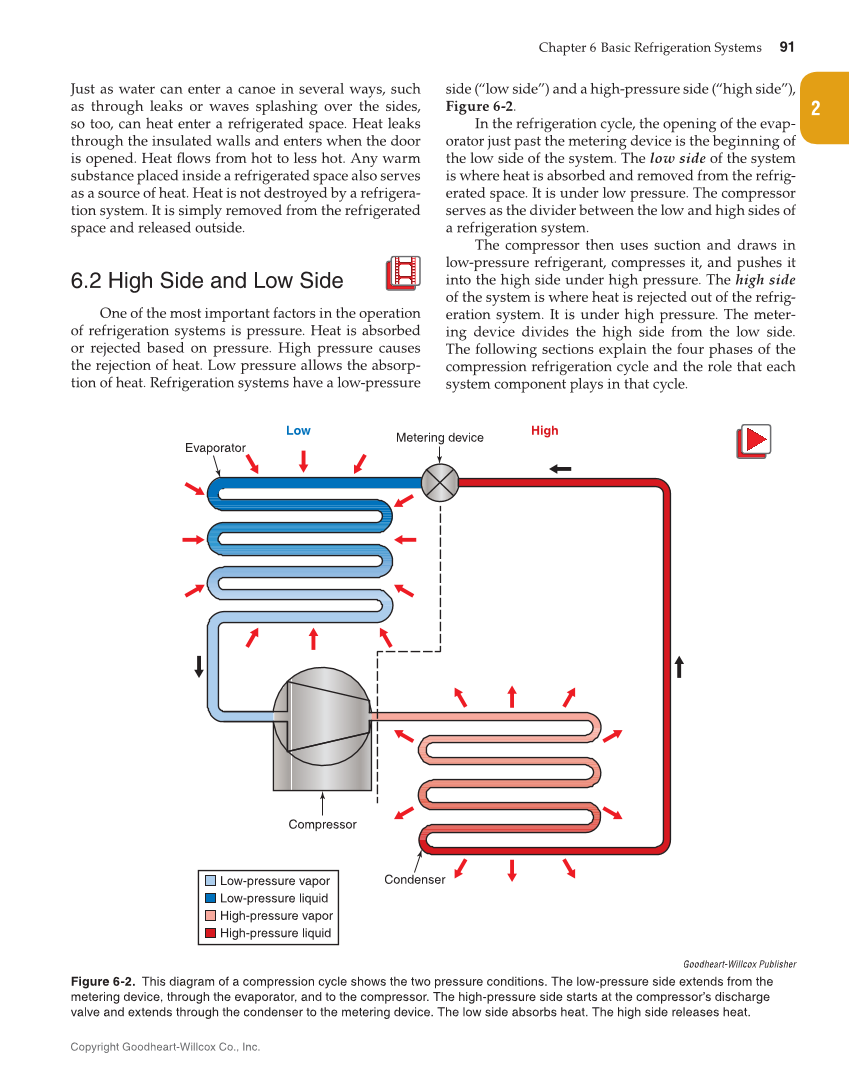Chapter 6 Basic Refrigeration Systems 91 Copyright Goodheart-Willcox Co., Inc. 2 Just as water can enter a canoe in several ways, such as through leaks or waves splashing over the sides, so too, can heat enter a refrigerated space. Heat leaks through the insulated walls and enters when the door is opened. Heat flows from hot to less hot. Any warm substance placed inside a refrigerated space also serves as a source of heat. Heat is not destroyed by a refrigera- tion system. It is simply removed from the refrigerated space and released outside. 6.2 High Side and Low Side One of the most important factors in the operation of refrigeration systems is pressure. Heat is absorbed or rejected based on pressure. High pressure causes the rejection of heat. Low pressure allows the absorp- tion of heat. Refrigeration systems have a low-pressure side (“low side”) and a high-pressure side (“high side”), Figure 6-2. In the refrigeration cycle, the opening of the evap- orator just past the metering device is the beginning of the low side of the system. The low side of the system is where heat is absorbed and removed from the refrig- erated space. It is under low pressure. The compressor serves as the divider between the low and high sides of a refrigeration system. The compressor then uses suction and draws in low-pressure refrigerant, compresses it, and pushes it into the high side under high pressure. The high side of the system is where heat is rejected out of the refrig- eration system. It is under high pressure. The meter- ing device divides the high side from the low side. The following sections explain the four phases of the compression refrigeration cycle and the role that each system component plays in that cycle. Condenser Metering device Evaporator Compressor Low-pressure vapor Low-pressure liquid High-pressure vapor High-pressure liquid Low High Goodheart-Willcox Publisher Figure 6-2. This diagram of a compression cycle shows the two pressure conditions. The low-pressure side extends from the metering device, through the evaporator, and to the compressor. The high-pressure side starts at the compressor’s discharge valve and extends through the condenser to the metering device. The low side absorbs heat. The high side releases heat.
